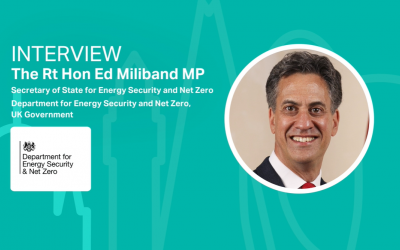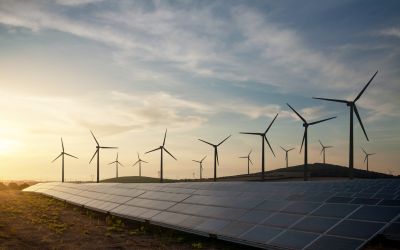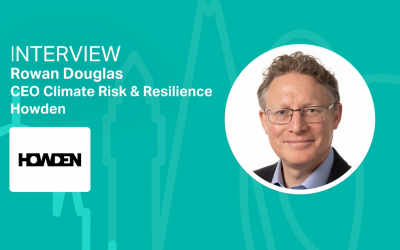Interview with Simon Irish – CEO, Director and Co-Founder of Terrestrial Energy
Climate Action spoke with Simon Irish, Chief Executive Officer, Director and Co-founder of Terrestrial Energy: a company in the process of developing an advanced carbon-free power plant based upon the Integral Molten salt Reactor (IMSR™) design.

Climate Action spoke with Simon Irish, Chief Executive Officer, Director and Co-founder of Terrestrial Energy: a company in the process of developing an advanced carbon-free power plant based upon the Integral Molten salt Reactor (IMSR™) design.
Firstly, can you tell us who Terrestrial Energy are and explain your business objectives?
Terrestrial Energy is developing an advanced carbon-free power plant that uses a molten salt reactor, an Advanced Nuclear reactor technology developed by American scientists in the 1960s, but never commercialized. IMSR power plants will deliver clean, non fossil-fuel based heat energy for industrial use or electricity for industrial power provision. This gives nuclear energy a very different commercial profile, one with far broader industrial utility and reach, and one that is more cost-competitive than today’s nuclear plants, in fact, our plant is most importantly, cost-competitive with fossil fuel combustion. We believe IMSR power plants can make a significant contribution to clean global energy provision starting in the 2020s – within the critical response horizon to mitigate climate change – and deliver deep decarbonisation through clean energy and fuel provision to all sectors: grid power, industrial and transport.
Can you explain further what the Integral Molten Salt Reactor (IMSR) is and does?
The IMSR, the “integral Molten Salt Reactor” is a liquid fuelled reactor system – its fuel is a molten salt, not a solid fuel rod. It operates at high temperature and at atmospheric pressure. With high temperature operation, 700oC, the IMSR provides great industrial utility – heat for far more efficient power generation, for hydrogen production, for ammonia and fresh water production. Extensive passive safety features and with systems operating at atmospheric pressure, give relative simplicity in design, construction and operation, and by extension greater cost and financing advantage. For the first time since the dawn of the industrial revolution, a carbon-free source of power can be used in great scale to fuel modern industry, not some industries, but all. For example - nuclear hydrogen with its many uses, including steel production without coke use, for cleaner, better, cheaper steels.
What are the environmental benefits of the IMSR?
Traditionally, environmentalists train their focus on only a third of the problem – how to decarbonize electricity. The other two-thirds are the industrial and transport sectors, each of similar energy size and both nearly 100% reliant on fossil fuel combustion. And these sectors won’t easily be replaced by renewables. Terrestrial Energy’s IMSR addresses all three energy segments of the problem.
The IMSR uniquely has the capability of providing carbon-free power at a cost that is competitive with fossil fuel alternatives. The mechanism for IMSR heat and power adoption is not through global policy mandate, but through the powerful market mechanisms of private sector investment and consumer action. Cost and convenience, as well as technical viability, will be essential in driving the immense technological substitution which must take place in order to decarbonize.
What impact will the development of the IMSR have on civilian nuclear energy supply?
The future of energy is here and it is the IMSR. IMSR deployment in the 2020s fits very well with the replacement cycle for our existing nuclear power plants. There is no better site for a new nuclear power plant, an IMSR power plant, than the site of an existing plant. It has the support of the local community, which understands the economic benefits generated locally by a nuclear power plant, including premium jobs in management, engineering, construction and administration, and the indirect benefits to local commerce. And very likely, the site has environmental merit, which will support new licence applications.
While the traditional market for nuclear power, the grid power market, is central for IMSR early deployment, the true market opportunity is much bigger due to much greater siting flexibility. An IMSR power plant is a Small Modular Reactor, or “SMR”. It requires a considerably smaller land footprint, and has much lower dependence on grid and water access. In fact, an IMSR power plant could be operated completely off-grid and without water for cooling; this is not practicable for Conventional Nuclear power plants. So IMSR can also operate in small markets or remote locations, including remote industrial facilities and island nations. In these locations a 190 MWe IMSR power plant could displace costly and dirty diesel power generation, and support regional grids and local industry.
What is the current market opportunity for nuclear energy?
Nuclear energy is the most scalable carbon-free energy source we have. Only nuclear energy can claim to provide the primary source for every single energy need we have for the rest of this century and far beyond. Nuclear power is virtually carbon-free and immensely scalable low-cost power. The life-cycle carbon dioxide emissions of a nuclear power station are equal to wind power, half of hydroelectric power, one-third of geothermal power, one-fourth of photovoltaic solar power, and a tiny fraction of fossil fuel power sources. Nuclear power’s natural resource “externalities” per KWh, such as land requirement, steel, concrete, rare earth metal requirements, are fractional against alternatives as well.
The world today faces an energy crisis of immense proportions. The dual factors of population growth and industrialization of developing nations is causing the energy needs of the planet to soar. The world requires safe, reliable, clean, dispatchable power. Fossil fuels, which power 83% of global energy today do not meet the clean criteria. Renewables and conservation, though tremendously useful in a wide variety of scenarios, are not dispatchable without costly storage and hence cannot be relied upon to power industry. Hydro power and geothermal power are clean sources of base-load power, but are geographically constrained. Nuclear power, whether conventional or advanced, must be acknowledged in the discussion of how we are going to mitigate the impacts from climate change for its carbon-free value, and its proven ability to decarbonize national grids, quickly and effectively.
Nuclear energy is not an experiment in clean energy. Nuclear is today’s proven scalable clean energy. France, Sweden and the Canadian province of Ontario offer undeniable examples of how an expeditious decade long ramp-up of nuclear power is both possible and an effective engine for rapid grid decarbonization. Ontario’s grid delivers to its customers, electricity with only 50 grams CO2 per KWh. This should be the envy of the industrial world. It is this performance that nations aspired to achieve by 2050 at COP21. In Ontario, Canada 50 grams CO2 per kWh is a reality today thanks to nuclear energy.
Another important virtue of the IMSR is its strong load-following capability and its ability to link with industrial heat processes, for example hydrogen production. This has two implications, and one is truly remarkable.
Firstly, it positions the IMSR as a superior alternative to natural gas to balance grid loads from increasing variable renewable energy (VRE) power penetration. Wind and solar power do not have to imply more natural gas. Secondly it negates the need for grid storage, and the quest for large scale grid storage solutions becomes an irrelevant commercial pursuit.
We are working with a national laboratory on IMSR integration into VRE grids and industrial heat applications; this is truly exciting work. We believe that Advanced Nuclear, and specifically the IMSR, can be the bridge between the two, and this bridge places the IMSR in a symbiotic commercial position with VRE sources.
Terrestrial Energy is a gold sponsor of Climate Action’s upcoming Sustainable Investment Forum. What were your motivations behind your involvement with this event and who would you like to meet?
We wish to communicate the following messages:
We share your value system and your concern for climate change. Our company is comprised of people who care deeply about our environment, the ecology of our rivers, the beauty of our mountains, plains and coastlines, and the economy that supports our sophisticated societies with their schools, hospitals and transport. We believe we can make a contribution.
However, we recognise that the biggest risk we face is not the climate change per se – the problem is more subtle. The biggest risk we face is making poor decisions about our energy future. The good decision, which is the one that addresses our energy challenges for desired outcomes, can only come about by objective analysis of our energy choices. It must involve a process that looks at the relative – not the absolute – but the relative advantages and disadvantages of each energy choice.
No energy source comes without risks and drawbacks, and we are not suggesting that Conventional Nuclear and Advanced Nuclear technologies are without drawbacks. However, we are saying that against the prime objective – 80% GHG reduction by 2050 – and on a balanced and comparative basis, nuclear power offers a very attractive balance of benefits to risks compared to other choices – a view supported by 70 years of operating data. This data shows unequivocally that nuclear is the safest and cleanest energy source we have.
Nuclear power has been an important solution to our clean energy needs and must be viewed as a leading clean energy candidate alongside others, and Advanced Nuclear takes nuclear technology forward with a giant leap.
All sources of carbon-free power must be entertained in order to solve this immense clean energy problem. The state of New York has recently acknowledged this and enacted climate policy based upon this undeniable reality, as has Sweden with recent amendments to its nuclear tax policy.
We believe that the IMSR is the future of energy as it has an excellent chance of driving rapid decarbonization globally, effectively, more rapidly and more economically than Conventional Nuclear power.
You will also personally be speaking at SInv. Could you give us a brief outline of what you will be discussing?
Simon Irish will review global clean energy challenge, discuss the enormity of the problem, and make the case that innovative solutions are critically needed today.
He will discuss the opportunities offered by Advanced Nuclear innovation, and the IMSR in particular. These are clean energy opportunities that extend nuclear energy beyond grid power provision to industrial heat provision, and play a key role in reshaping industry with scalable carbon-free production of hydrogen, ammonia, freshwater, and carbon-neutral transport fuels. He will discuss the synergies between Advanced Nuclear, VRE and industrial production, and a synthesis of the three that provides commercial advantage to each and negates the need for grid storage.






